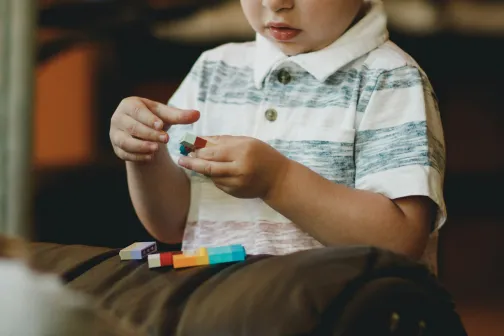
Autism in Boys vs. Girls: A Comprehensive Guide to Understanding Gender-Specific Autism Traits
Introduction: Breaking the Autism Diagnosis Myth
Autism Spectrum Disorder (ASD) is a complex neurodevelopmental condition that defies a one-size-fits-all understanding. For decades, autism has been predominantly viewed through a male-centric lens, leading to significant disparities in diagnosis, understanding, and support for girls and women on the spectrum.
The Shocking Diagnosis Gap
Current statistics paint a stark picture:
- 1 in 27 boys are diagnosed with autism
- 1 in 116 girls receive an autism diagnosis
But here's the critical insight: this gap doesn't mean autism is less common in females. Instead, it reveals a profound misunderstanding of how autism manifests across genders.
The Historical Context of Autism Diagnosis
A Male-Centered Research Landscape
The history of autism diagnosis is deeply rooted in male-focused research. When Leo Kanner first described autism in 1943, his initial studies primarily involved male subjects. This foundational research created a diagnostic framework that predominantly recognized "male" autism traits, inadvertently creating a massive blind spot for how autism presents in girls and women.
The Masking Phenomenon
Girls with autism have developed an extraordinary survival mechanism known as "masking" or "camouflaging." This complex social adaptation involves:
- Carefully observing and mimicking peer behaviors
- Suppressing natural autistic traits
- Expending enormous mental energy to appear "typical"
Expert Insight: Masking doesn't mean the autism isn't present—it means it's hidden, often at a significant psychological cost.
Detailed Breakdown: Autism Traits in Boys vs. Girls
1. Social Communication: A Tale of Two Approaches
Boys with Autism
- Direct social challenges
- Often avoid social interactions completely
- Struggle with reciprocal communication
- More likely to be seen as "socially awkward"
Girls with Autism
- Sophisticated social mimicry
- Carefully crafted social interactions
- May have one close friend instead of multiple connections
- Social difficulties masked by apparent social skills
Real-World Example:
- A boy might refuse to play with classmates
- A girl might join a group but struggle to maintain natural conversation flow
2. Special Interests: Beyond Stereotypes
Typical Male Autism Interests
- Mechanical systems
- Transportation networks
- Mathematical patterns
- Precise, data-driven topics
- Rigid focus on specific details
Typical Female Autism Interests
- Animals and nature
- Fictional worlds
- Detailed narrative-based topics
- Creative and imaginative domains
- Deep, empathetic connections to interests
Professional Observation: These interests are not absolute but represent common patterns observed in autism research.
3. Emotional Regulation: Internal vs. External Responses
Boys' Emotional Patterns
- Externalized emotional responses
- Visible meltdowns
- Direct frustration expression
- Clear sensory overload reactions
Girls' Emotional Patterns
- Internalized emotional processing
- Subtle shutdown mechanisms
- Anxiety-driven emotional responses
- Complex emotional suppression
4. Sensory Processing: Subtle Differences
Male Sensory Experiences
- Obvious sensory aversions
- Clear physical reactions
- More likely to show immediate discomfort
- Visible stimming behaviors
Female Sensory Experiences
- More nuanced sensory sensitivities
- Quiet coping mechanisms
- Potential long-term sensory fatigue
- Less noticeable self-regulation strategies
Why Girls Are Frequently Misdiagnosed
The Misdiagnosis Cascade
Girls with autism often receive alternative diagnoses:
- Anxiety Disorders
- Depression
- Obsessive-Compulsive Disorder (OCD)
- Attention Deficit Disorders
Critical Factors Contributing to Misdiagnosis:
1. Diagnostic criteria based on male presentations
2. Advanced social camouflaging techniques
3. Internalized symptom manifestation
4. Societal expectations of female behavior
Case Study: The Hidden Autism
Sarah's Story
- Diagnosed at 16 after years of misunderstandings
- Initially labeled as "shy" and "overly sensitive"
- Developed significant anxiety from unrecognized autism
- Breakthrough came through specialized female autism assessment
Comprehensive Checklist: Identifying Autism in Girls
Early Warning Signs
> Social Exhaustion
- Extreme fatigue after social interactions
- Need for significant recovery time
- Apparent social skills that feel performative
> Emotional Complexity
- Heightened emotional sensitivity
- Difficulty processing complex emotional scenarios
- Tendency to overthink social interactions
> Unique Behavioral Patterns
- Unconventional play strategies
- Organized rather than imaginative play
- Strict adherence to self-created rules
> Communication Nuances
- One-sided conversations about special interests
- Advanced vocabulary in specific domains
- Difficulty with conversational give-and-take
Supporting Neurodivergent Children: Tailored Strategies
For Parents of Boys with Autism
- Create structured social opportunities
- Use visual communication tools
- Develop sensory-friendly environments
- Encourage special interest exploration
- Teach direct social skills
For Parents of Girls with Autism
- Recognize and prevent social masking
- Provide explicit social interaction scripts
- Validate emotional experiences
- Create safe spaces for authentic expression
- Support special interest development
The Path Forward: Evolving Autism Understanding
Breaking Diagnostic Barriers
The future of autism diagnosis requires:
- Gender-inclusive research
- Comprehensive diagnostic criteria
- Recognition of diverse autism presentations
- Support for individual neurodivergent experiences
Empowerment Through Understanding
Autism is not a deficit—it's a different neurological configuration. Each individual, regardless of gender, deserves:
- Accurate diagnosis
- Personalized support
- Celebration of unique strengths
- Opportunity for self-discovery
Conclusion: A Call for Comprehensive Awareness
Understanding autism across genders is more than an academic exercise—it's about recognizing the full spectrum of human neurodiversity. By expanding our understanding, we create a more inclusive, supportive world for all neurodivergent individuals.
Reflection Question:How can we continue challenging our understanding of autism and support neurodivergent individuals in their unique journeys?
Disclaimer: This article provides general information and should not replace professional medical advice. Always consult healthcare professionals for personalized diagnostic and support recommendations.